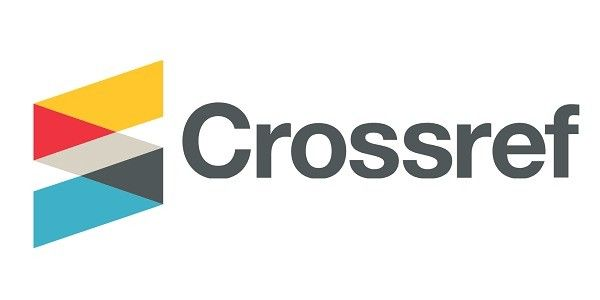Requirements for authors
“Yessenov Science Journal”
In the Yessenov Science Journal, articles are published in Kazakh, Russian and English.
Articles will be published only after a closed ("blind") review by a double method and review by the editors. One author can submit only one article to one issue. The maximum length of publication of an article submitted to the editorial office is 1 year.
The editorial staff of the journal checks the manuscript for independence of execution through a licensed automatic plagiarism check system. Based on the results of automatic verification of the manuscript for plagiarism, a full electronic verification report is uploaded (the threshold percentage of originality of the article is 65 %). Articles that have not received a satisfactory result are not accepted for further consideration. The editors of the journal notify the author of this for correspondence.
ARTICLE DESIGN FOR A JOURNAL ARTICLE STRUCTURE
- Contain the results of original scientific research on topical issues not previously published and not intended for publication in other publications.
- The volume of the article is 6-12 pages (scientific reviews, short scientific reports - 4- 8 pages), Times New Roman font - 12, the margins are all -2 cm wide, paragraph - 1.25, line spacing - 1.
- Article materials should have the following structure:
UDC (Universal Decimal Classification) - in the upper left corner;
SRSTI (State rubricator of scientific and technical information) (https://grnti.ru/) - on the next line after the UDC in the upper left corner;
DOI - on the next line after SRSTI in the upper left corner (assigned and filled in by the editors of the journal);
ARTICLE TITLE - centered through the line after the DOI in capital letters, highlighted in bold. The full title of the article should not exceed 12 words.
THE AUTHOR(S) of THE ARTICLE are INDICATED by initials, surname (if the article is written in Kazakh or Russian), surname and first name are written in full; if the article is written in English, surname and initials are written; – centered through the line after the title of the article, highlighted in bold. The corresponding author is highlighted with an asterisk*. Information about the authors is written in a simple font, in lowercase letters and aligned in the center of the line. If the authors are all from the same university, numbering is not necessary.
NAME OF THE ORGANIZATION (place of work or study), city, country - centered one line after the last name and initials of the author(s) in bold type;
E-MAIL OF THE AUTHOR(S) - in the center through the line after the name of the organization (place of work or study);
ABSTRACT (the word is highlighted in bold) – a line after the author's email(s) (starting from a new line, width alignment); The abstract should be devoted to the research article, and not to the subject of the study as a whole. It is a short but informative summary of the article. Formulas, abbreviations, and references to items in the list of references are not allowed in the abstract. The abstract (in English, Kazakh and Russian) is written in 150-300 words.
KEYWORDS (in English, Kazakh and Russian) – 5-8 words. It is highlighted in bold – starting from a new line after the annotation (width alignment). A comma (,) is used as the separator.
Structured main text (INTRODUCTION; MATERIALS AND RESEARCH METHODS; RESEARCH RESULTS; CONCLUSION) – one line after the keywords (centered section title in italics, then starting from a new line, the text of the section in regular font and width alignment).
Introduction The rationale for choosing a topic, the relevance of the problem, and the purpose of the study. During the description of the experience, which is the basis for the study, it is reported that there is a problematic situation in choosing a topic.
Materials and methods. This section describes the materials used and research methods in as much detail as possible. A clear and detailed description of the methods and materials used, characteristics of the sample, etc. makes it possible to assess the reliability of the results obtained.
Results and Discussion. This section should present objective data obtained during the study based on the described methodology. The results of the author's research should be presented as fully as possible.
Conclusion. This section involves the formulation of conclusions based on the analysis of the results. The conclusion is written in full text, in no case a list.
Acknowledgements. Grants or other types of financial support (and, if necessary, their sources) for the research should be listed here. Then you should thank the specialists or institutions that helped in organizing and conducting the study. One should not thank the persons who took part in the consideration and acceptance of the manuscripts, i.e. reviewers, editors, and members of the editorial board of the journal.
REFERENCES (the word is written in capital letters and highlighted in bold).
The bibliographic list consists of at least 10 titles. Current and foreign literature should occupy at least 10% of the total number of positions in the list. If there are works in the Cyrillic alphabet in the list of references, it is necessary to present the list of references in two versions: the first – in the original, the second – in the Romanized alphabet (transliteration- translit- online.ru).
Both versions of the list of references are presented in alphabetical order, and ONLY those works that are cited in the text. The list of references should include only essential references to which there are direct references in the text. Avoid over-quoting. Avoid excessive references to publications by CIS/USSR authors, and use international experience. The bibliographic list should contain the fundamental and most relevant works of well-known foreign authors and researchers on the subject of the article.
The style of the list of references in Russian and Kazakh according to GOST 7.1-2003 "Bibliographic record. Bibliographic description. General requirements and rules of compilation". For example: Nekrasov A. G., Sinitsyna A. S. New generation transport and logistics systems in the digital economy //The Power of Systems magazine. – 2017, – №3(4), – Pp. 11-23.
REFERENCES
The design style of the Romanized list of literature, as well as sources in English (another foreign language) for socio-humanitarian areas - American Psychological Association(http://www.apastyle.org/).
The Romanized list of references should look like this: author (s) (transliteration) → (year in parentheses) → title of the article in the transliterated form [translation of article title into English in square brackets], name of Russian language source (transliteration, or English title – if any), output data with notation in English.
For example: Nekrasov A. G., Sinitsyna A. S. (2017) Transportno-logisticheskie sistemy novogo pokoleniia v tsifrovoi ehkonomike [New generation transport and logistics systems in the digital economy]// Sila sistem zhurnal. №3 (4), – P. 11-23. (In Russian)
If the article is written in Russian, at the end (after the "References" section), the title of the article, the surname and initials of the author(s), the abstract and keywords are written in Kazakh, followed by the surname and first name (in full) of the author(s), the title of the article, the abstract and keywords in English. language.
If the article is written in English, at the end (after the "References" section), the title of the article, the full name of the author(s), the abstract and keywords are written in Kazakh, followed by the last name and initials of the author(s), the title of the article, the abstract and keywords in Russian. language.
Design of tables, figures, formulas. In the article in parentheses (1) only those formulas are numbered, to which there are references in the text. In tables, figures, formulas, there should be no discrepancies in the designation of symbols, signs. Drawings must be clear and clean. There should be references to figures and tables in the text, for example: “….. in Table 1” or (Table 1); “…. in figure 1” or (fig. 1). Graphs, drawings and photographs are inserted into the text after the first mention of them in a form convenient for the author. Figure captions are given: under the illustrations in the center after the word Figure with a serial number, for example: Figure 1 - Figure title; above the table in the center after the word Table with a serial number, for example: Table 1
- Table name.
Use of abbreviations and abbreviations. In the main text of the article, the use of abbreviations and abbreviations is allowed. All abbreviations and abbreviations, with the exception of those that are obviously well known, must be deciphered the first time they are used in the text. After decoding, the abbreviation or abbreviation is written in parentheses. The use of abbreviations and abbreviations in the abstract and keywords is not allowed.
It is necessary to provide information about the authors on a separate page
For the author's biography, specify the full name, place of work and position, academic degree and title, business address, as well as contact information (e-mail and phone).
THE AUTHORS ARE RESPONSIBLE FOR THE RELIABILITY AND SIGNIFICANCE OF SCIENTIFIC DATA, AS WELL AS FOR THE SCIENTIFIC
CONTENT OF THE WORK.






